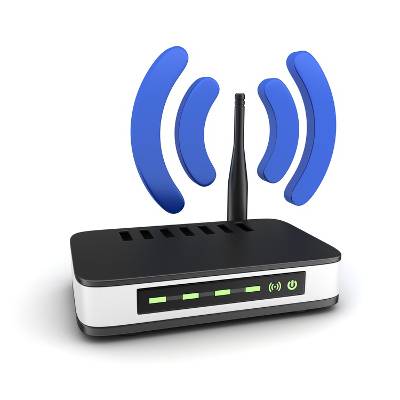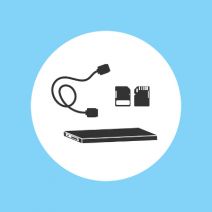If you’ve had your Facebook profile since the dawn of the social media age, chances are that it’s accumulated an immense amount of personal information. While you might have felt weird handing over all of this data to Facebook, the company has made it surprisingly easy to take it back; well, as much as you can, at least.
Macro Systems Blog
One of Microsoft’s latest moves to appeal to business owners has been to establish a Technology as a Service program, allowing small businesses to purchase Surface products, accessories, and support by subscribing to a monthly payment plan. What’s more, when time comes to upgrade, customers can do so, although some fees may apply as dictated by the lease.
Vacations are an important part of maintaining one’s sanity, especially if you’re a business owner. However, unless you have a reliable staff that can handle the management of your business, chances are that you might feel like you can’t get away from the office long enough to relax. While it might seem tempting to disconnect yourself from the office entirely while on vacation, it’s actually better for your business if you don’t.
Your wireless router is critical to your business’s online infrastructure and provides your team with precious wireless Internet connections throughout the office. You need to ensure that the signal can reach your entire office. Here are some tips to help you figure out where to put your router, and to ensure that its signal is as strong as possible throughout your office.
Businesses have always relied on telephone communication systems to stay in touch with external and internal contacts. However, the traditional method of telecommunication has fallen behind the times, giving way to more flexible solutions that are designed to save businesses money and improve efficiency. In particular, Voice over Internet Protocol can be a valuable asset for small businesses that are experiencing growth.
Businesses have always relied on telephone communication systems to stay in touch with external and internal contacts. However, the traditional method of telecommunication has fallen behind the times, giving way to more flexible solutions that are designed to save businesses money and improve efficiency. In particular, Voice over Internet Protocol can be a valuable asset for small businesses that are experiencing growth.
Businesses have always relied on telephone communication systems to stay in touch with external and internal contacts. However, the traditional method of telecommunication has fallen behind the times, giving way to more flexible solutions that are designed to save businesses money and improve efficiency. In particular, Voice over Internet Protocol can be a valuable asset for small businesses that are experiencing growth.
Your business relies on several software solutions that are designed to help your team be as productive as possible throughout the workday. In order to use these pieces of software, users often need to have a software license or an agreement with the developers. Without these software licenses, the legitimacy of the software is questioned and your team loses valuable time to be productive.
There was once a time when businesses would only seek out technological expertise when it was necessary. This would be when a major component was on its last leg, or if they required new technology following a major hardware failure. Today, a better type of IT service model allows businesses to avoid the downtime and unexpected support costs associated with broken technology, by practicing proactive maintenance.
Any business venture nowadays is apt to utilize a lot of data, and therefore will require plenty of digital storage space to accommodate its needs. As a result, selecting a storage device is an important decision to make - especially when one is trying to decide between a Solid State Drive (or SSD) or a Hard Disk Drive (HDD) storage solution. A quick comparison between the two will help you choose one over the other.
No security solution is perfect. Each one has its own set of pros and cons. For example, relying completely on an automated solution is thorough, but it will flag plenty of threats that aren’t really threats (aka, false positives). Meanwhile, a human overseeing security is great for spotting worrisome trends, but a human can’t possibly catch every single attack. With this dynamic in mind, a team of researchers from MIT has successfully blended the two.
Working at a desk is a fairly inescapable for the modern office worker. The trouble with sitting at a desk for long intervals is that it causes physical issues, especially if the workspace isn’t properly set up. Fortunately, you don’t have to invest in specialized equipment; it’s fairly simple to establish best practices that will ensure employee comfort and productivity.
The development of mobile platforms have led to the development of hundreds of apps that give users the ability to capture websites, take notes, and do just about anything else as it pertains to a person’s daily business tasks. Some users of modern smartphones (and other mobile devices) routinely complain about the reliability of the on-screen keyboard interface, as communication is as important to the development and outcome of projects as ever. For this reason, some developers have begun creating applications that allow users to dictate to their devices; turning spoken words in to text. Here are three of the most reliable options to turn your voice into text.
There’s no denying that your business’s productivity suite is one of its most valuable software solutions. Cloud services like Google Apps for Work and Microsoft Office 365 continue to be huge game-changers in the business environment, and it’s been found that their increasing popularity is thanks to the convenience of providing mobile access to important data and applications.
Google Drive, available for both iOS and Android, is continuously being updated with new features and functionality. One of the most interesting features is the ability to take a picture of a document, and store the file in Drive as a PDF. Plus, if the file has text, it will be compatible with Drive’s search function.
If your business is using Windows 10 on your workstations, you might have noticed that there are plenty of advertisements geared toward marketing some product or service to users. These advertisements can get annoying. We’ll show you how to turn off the lock screen ads that appear before you log in.
One of the latest vulnerabilities in open-source software can be found in 7zip, a file archiver and decompresser. 7zip has been found to have several security vulnerabilities which have software developers rushing to fix their products. The damage done extends far beyond 7zip, reaching both people who use 7zip itself, and developers who have used the technology in the creation of their own tools and software.





















